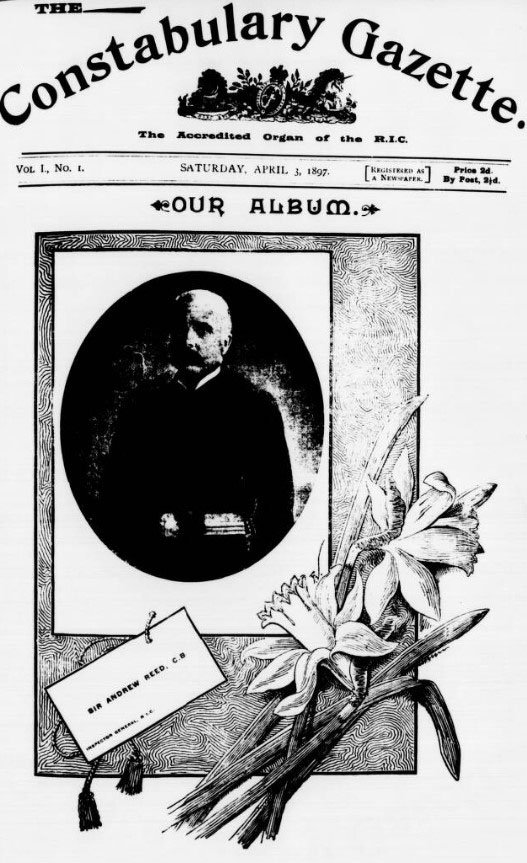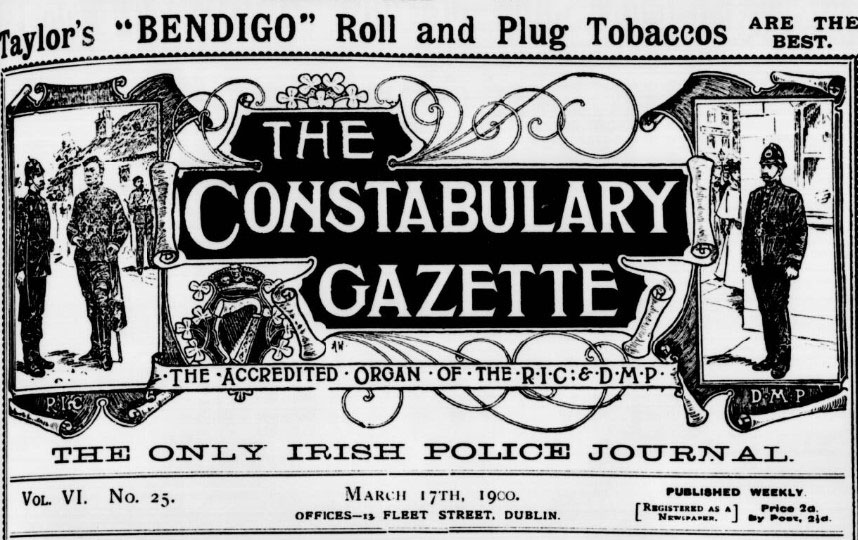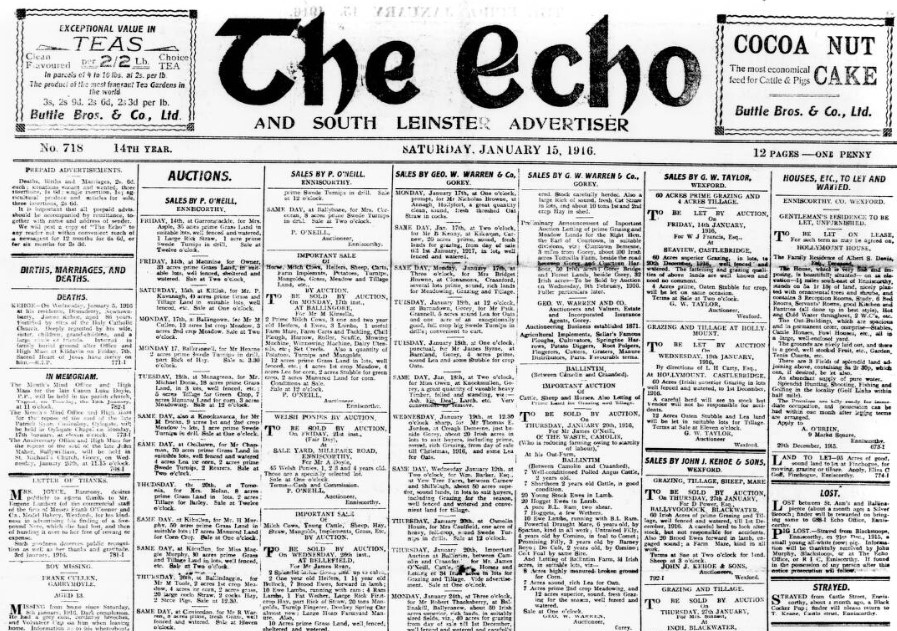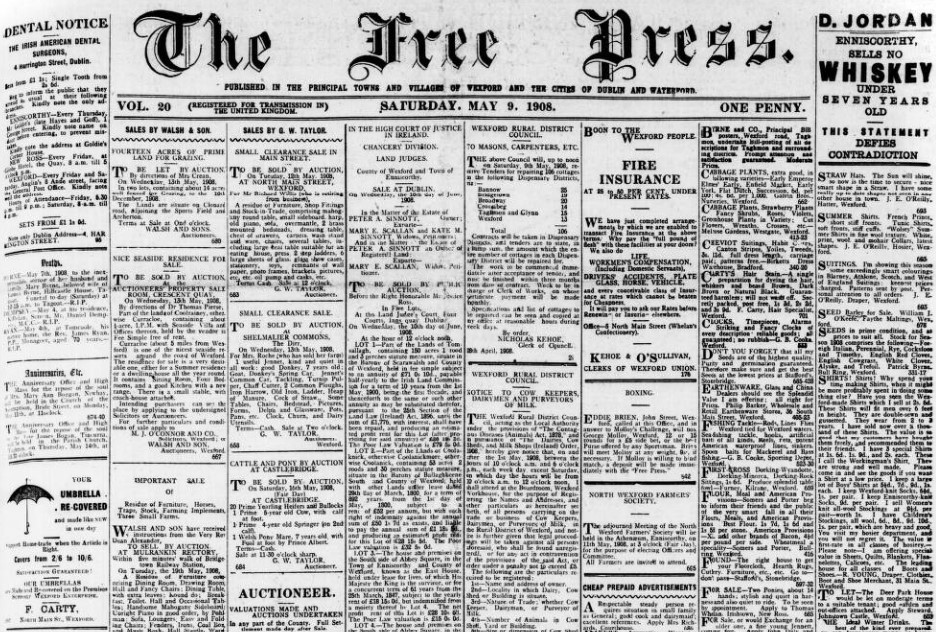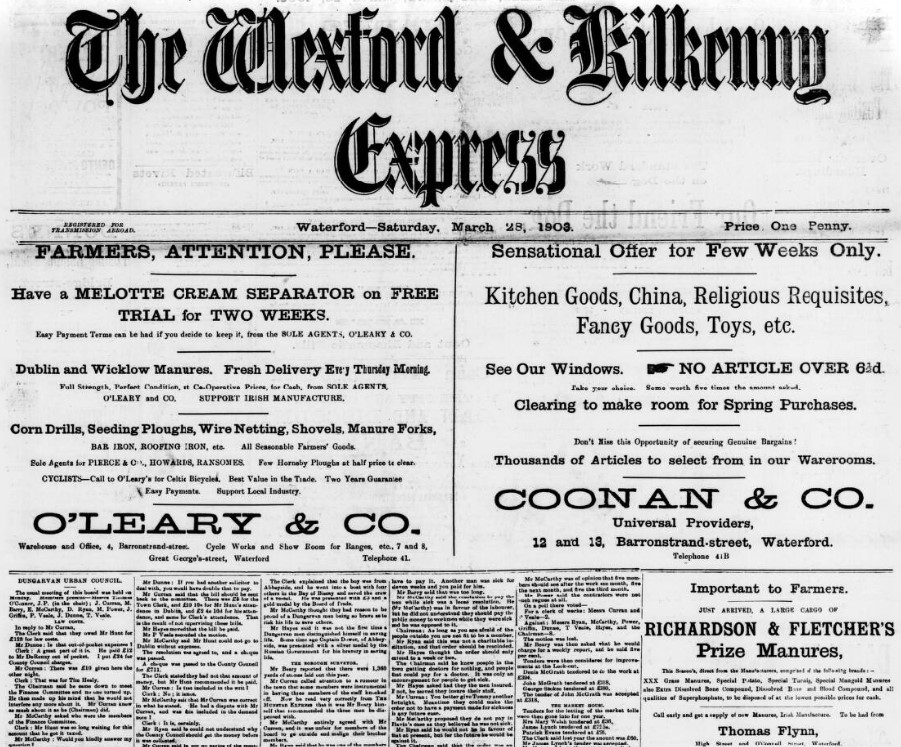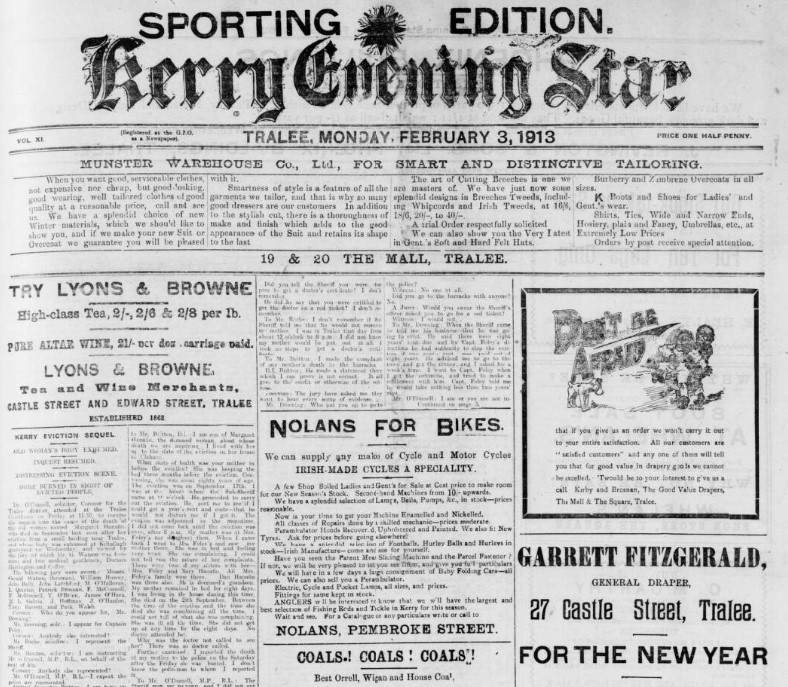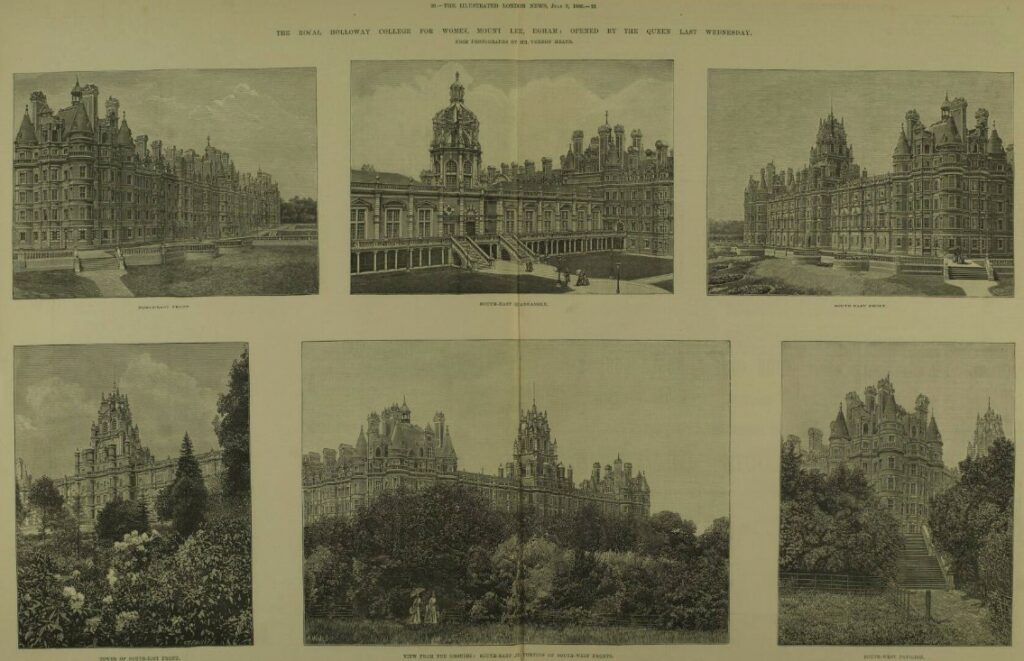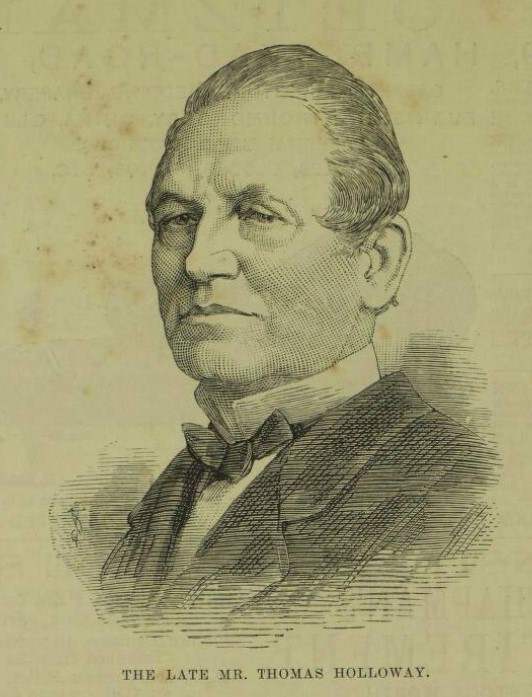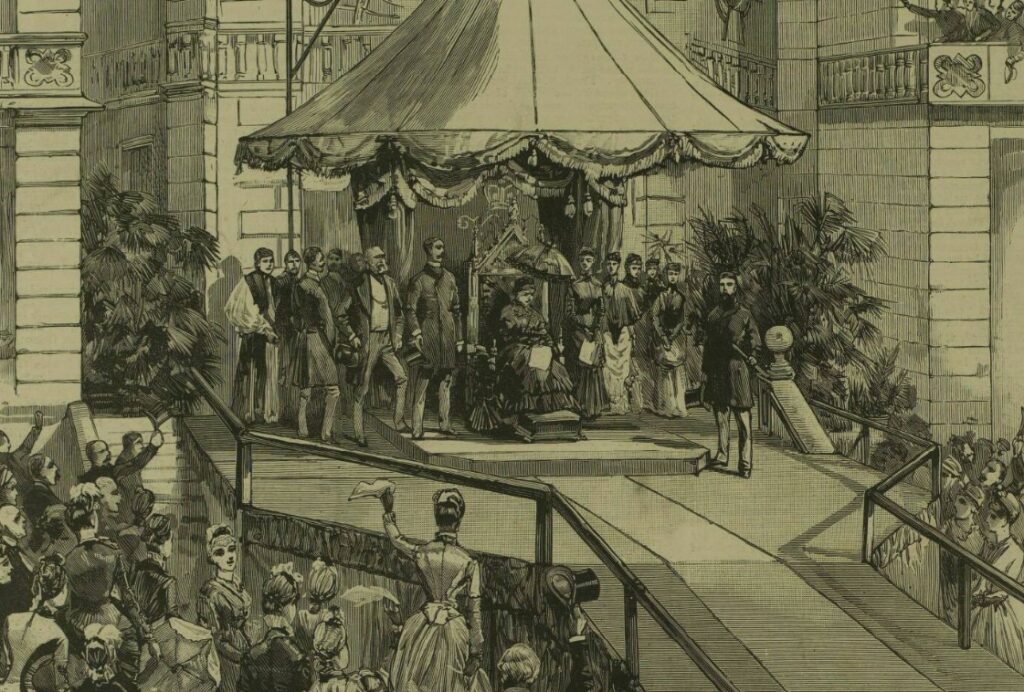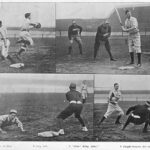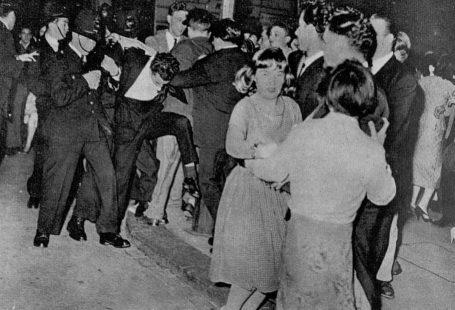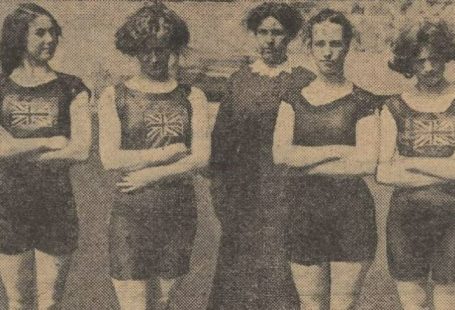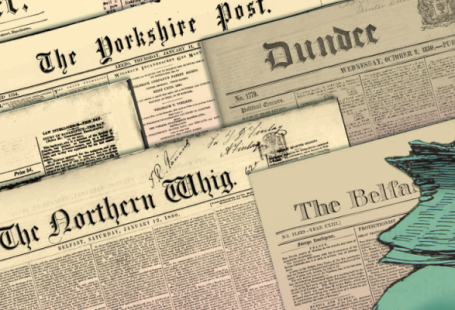This week at The Archive we have added 5 brand new Irish titles to our collection, including the Constabulary Gazette, which was the ‘accredited organ of the Royal Irish Constabulary.’ Meanwhile, our other Irish titles cover the counties of Kerry and Wexford, whilst we have added 52,710 brand new pages in all to The Archive over the past seven days.
So read on to discover more about our new Irish titles of the week, and also to learn about the opening of Royal Holloway College for women on 30 June 1886.
Register now and explore the Archive
We begin our journey through our five new Irish titles of the week with the Constabulary Gazette, the organ of the Royal Irish Constabulary. The Royal Irish Constabulary (R.I.C.) was the police force of Ireland from 1822 through to 1922, and its Gazette was first published on 3 April 1897. Priced at two pence, the title appeared on a Saturday, and provided entertaining and improving articles for members of the R.I.C.
The debut edition of the Gazette outlined the need for such a publication, the inaugural editorial reading as follows:
And so you have your GAZETTE! My own belief is that the Royal Irish Constabulary – a force numbering in round numbers thirteen thousand men – athletic, intelligent – are incomplete without a journal for themselves. The Army, the Navy, the Civil Service, the National teachers, and even Railway porters have their special papers and some of them have more than one, and yet during all the years which the Constabulary has been in existence it is almost incredible that is has been dependent upon the ordinary daily papers – organs sectarian, political, and with little to interest a semi-military and distinctively exclusive and non-political body.
The Constabulary Gazette would have three main sections: its ‘Album,’ its ‘Editor’s Letter Box’ and its teaching column. The ‘Album’ would feature ‘select’ portraits of those in the R.I.C., and the first edition showcased a photograph and biography of the Constabulary’s Inspector General Sir Andrew Reed (1837-1914). The ‘Editor’s Letter Box’ would publish correspondence from members of the R.I.C., whilst the teaching columns, which featured lessons on grammar, geography, handwriting and arithmetic, were anticipated to be ‘appreciated by younger members of the Constabulary.’
Another important feature of the Constabulary Gazette was the ‘literary portion’ of the publication, the introductory editorial explaining how ‘the cultivation of a literary spirit is very healthy in a large and intelligent body of men.’ To this end the title featured a range of short stories, aptly including ‘new and trilling’ detective stories, alongside poems and songs, which were often illustrated. Furthermore, the Constabulary Gazette also published ‘Book Notes,’ penned by the Bookman.
The Constabulary Gazette took a look at legal matters too, presenting a ‘Legal Column’ authored by ‘The Barrister.’ It also examined interesting legal cases from Great Britain and Ireland, whilst also tracing the ‘evolution of the nineteenth century policeman.’ The publication, meanwhile, printed notices reporting on promotions and transfers within the R.I.C., news items from the organisation, and notices of births, marriages and deaths of those associated with the Constabulary.
Finally, the Constabulary Gazette contained further special interest columns, including a look at sport, with a particular focus on cycling and athletics. The publication appeared until 1922, when the R.I.C. was disbanded. The R.I.C. was replaced by the Civic Guard (renamed the Garda Síochána) in the Republic of Ireland, and the Royal Ulster Constabulary in Northern Ireland.
Our next three new titles all hail from County Wexford in the south east of Ireland, and we begin with the Enniscorthy Echo and South Leinster Advertiser, which first appeared in 1902 as the Echo and North Wexford and General Advertiser. The Echo was founded by politicians William Sears (1868-1929) and Sir Thomas Esmonde (1862-1935). Sears was a Sinn Féin politician who would go on to be M.P. for South Mayo, whilst Esmonde was an Irish Home Rule nationalist politician and author.
The Echo was published every Friday in Enniscorthy, the second largest town in County Wexford. Filling an impressive sixteen pages, the publication cost one penny and contained content in both English and Irish. Whilst reporting on both national and international news items, the Echo mainly focused on local issues, printing the latest from the Enniscorthy Guardians, the Enniscorthy Gaelic League, the Enniscorthy Town Tenants’ Association, the Wexford Petty Sessions, the Gorey Guardians, the New Ross Guardians and the New Ross Urban District.
The Echo also reported on sporting and agricultural news, printing ‘farm notes’ alongside the latest Gaelic Athletic Association (G.A.A.) results. By the 1930s the newspaper had a weekly circulation of 30,000 copies, and publication of the title ran into the twenty-first century.
The next of our trio of new titles from County Wexford is the Free Press (Wexford), which was founded in 1888 and was ‘published in the principal towns and villages of Wexford and Wicklow counties.’ This nationalist title was printed in Wexford every Saturday, and cost just one penny. Its ten pages were filled with mainly local news, but the title did feature some national and international tidings.
Alongside serialised fiction and correspondence, the Free Press published the latest from the Gorey Petty Sessions, the Gorey Farming Society, the Enniscorthy Petty Sessions, the Wexford Quarter Sessions, the Enniscorthy Urban Council, the Enniscorthy Town Court and the Wexford Corporation. Its content was produced in English and Irish, and the title had a particular focus on agricultural matters, for example reporting on ploughing matches, the latest from the Gorey Farming Society, and including articles such as ‘Barley Growing in Ireland.’
Meanwhile, the Free Press printed reports from the local Gaelic League, the latest from the County Wexford Coursing Club, and obituaries of notable local personalities.
The final of this week’s trio of new titles from County Wexford is the Wexford and Kilkenny Express, an independent publication that was founded in 1869 as the County Wexford Express and Wexford, New Ross, Enniscorthy, and Gorey Mail. The localised edition of Waterford’s Munster Express, the Wexford and Kilkenny Express circulated in Wexford, New Ross, Enniscorthy, and the surrounding towns and villages.
Covering international, national and local news, the Wexford and Kilkenny Express published the latest from the Dungarvan Petty Sessions and the Waterford Police Court, whilst also featuring a column entitled ‘Our Wexford Letter.’ The newspaper also featured parliamentary news, correspondence, and serialised fiction.
Our final new title of the week is the Kerry Evening Star, the sister paper of last week’s new title the Kerry News. The Kerry Evening Star was first published on 29 September 1902, and was founded by journalist Maurice P. Ryle, who was also the editor of the Kerry People and would go on to become the deputy editor of the Irish Independent.
The Kerry Evening Star was published every Monday and Thursday, the Thursday edition being a ‘sporting’ one,’ in Tralee, the county town of County Kerry. Whilst the Thursday edition contained general news items, such as the latest from the Tralee Urban Sanitary Authority, the Killarney Petty Sessions and the Dingle Union, it zeroed in on sports, featuring ‘Sporting News’ from the realms of racing, the G.A.A., and football.
Both the Monday and Thursday editions cost one halfpenny, and filled six pages. The Monday edition also covered local news from the likes of the Tralee Petty Sessions, the Tralee Urban Council, and the Killarney Urban Council, as well as publishing agricultural news, poetry and correspondence.
Opening of Royal Holloway College – 30 June 1886
137 years ago this week, on 30 June 1886, Royal Holloway College for women opened near Egham, Surrey. It was founded by entrepreneur and philanthropist Thomas Holloway (1800-1883), who sadly died before the institution was officially opened by Queen Victoria.
Our new title, the Wexford and Kilkenny Express, contains some fascinating background on the pioneering educational institution. In an article entitled ‘The Holloway College,’ which was published on 13 September 1879, the newspaper recalled how ‘about three years ago attention was drawn to a proposal by Mr Holloway of Tittenhurst, Sunninghill, Berks, to expend a considerable amount of money in the erection of a college for the higher education of women.’ The Wexford and Kilkenny Express related how, ‘since that time,’ Thomas Holloway had ‘purchased about 95 acres of land at Egham, near Virginia Water, known as the Mount Lee Estate,’ for the purpose of building the college.
By 1879, further steps were being made in the building of the educational institution. The Wexford and Kilkenny Express reported how:
Mr Holloway and his architect, Mr W H Crossland, visited the principal collegiate institutions in Europe, and during the past year the plans and specifications have been completed, and a contract has been signed for the building of the college within four years, the contract price being upwards of £250,000, exclusive of fittings and furniture. The style is to be that known as French renaissance, and will be carried out in Portland stone and red brick.
The article, furthermore, cited that the women’s college had been founded ‘by the desire and counsel of the founder’s wife,’ Jane, who had passed away some years before. The object of the institution was to ‘afford the best education suitable for women of the middle and upper classes, and it is intended to be mainly self-supporting.’
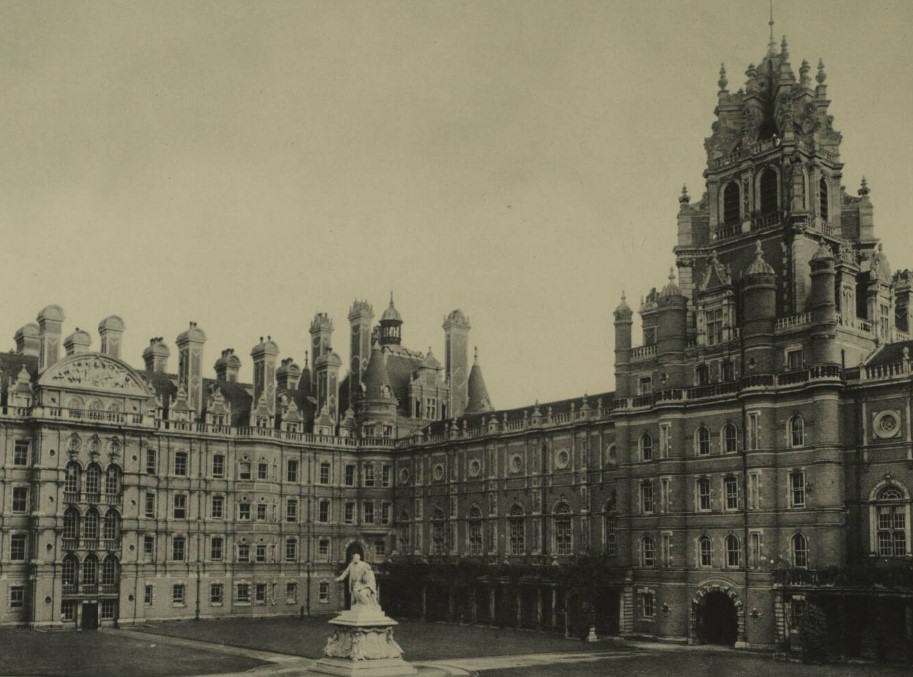
The Wexford and Kilkenny Express also explains how it was Thomas Holloway’s desire that the women attending the college be awarded degrees, degrees for women in the United Kingdom only being awarded from the University of London in 1878, with the University of Durham following suit in 1895, and only Oxford and Cambridge conferring degrees to women in the twentieth century. The piece reports how:
It is the founder’s desire that power be Act of Parliament, Royal Charter, or otherwise, should be eventually sought to enable the college to confer degrees after due examination; and that until such power is obtained the students shall qualify themselves to pass the women’s examination of the London University, or any examination of a similar or higher character which may be open to women at any of the existing Universities of the United Kingdom.
The Wexford and Kilkenny Express also outlined how:
It is intended to provide twenty founders’ scholarships of the value of £40 each, tenable for not more than two years’ in the college. No professor will be required to submit to any test concerning his or her religious opinion, and denominational theology is not to be taught.
Some seven years later, and the college for women at Royal Holloway was ready for its grand opening. On 5 July 1886 the Brighton Gazette reported how:
The Queen drove from Windsor Castle on Wednesday afternoon to the Royal Holloway College, Virginia Water, which Her Majesty declared open in the presence of a large and distinguished company, and was presented with a gold key set with three hundred brilliants.
Find out more about Royal Holloway, women in history, and much more besides, in the pages of our newspaper Archive today.
New Titles
| Title | Years Added |
| Constabulary Gazette (Dublin) | 1897-1922 |
| Enniscorthy Echo and South Leinster Advertiser | 1905-1906, 1910-1912, 1916 |
| Free Press (Wexford) | 1905-1912, 1916 |
| Kerry Evening Star | 1913-1914 |
| Wexford and Kilkenny Express | 1875-1884, 1886-1896, 1903-1905, 1907 |
You can keep up to date with all the latest additions by visiting the recently added page. You can even look ahead to see what we’re going to add tomorrow.


